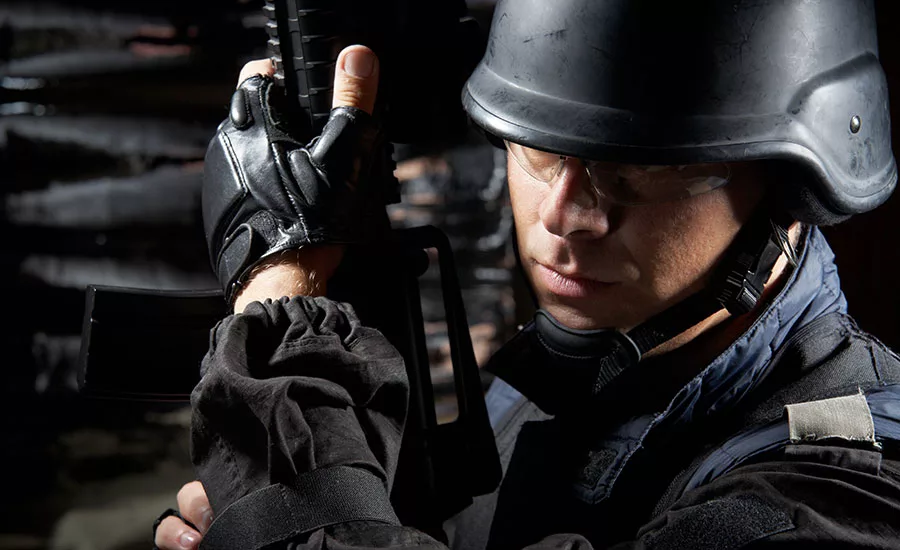Recognizing Security Blowback: Active Shooter Prevention and Response and Best Practices

In the webinar, “Recognizing Security Blowback: Active Shooter Prevention and Response and Best Practices,” Jim Sawyer, Security Director for Seattle Children’s Hospital, discussed why security blowback is essential to understand to mitigate active shooters and workplace violence.
Sawyer said that the term blowback is used for individuals who retaliate against government or others in the workplace and society in general. The term originated in 1953 from the CIA in 1953 when it orchestrated the overturn in Iran of the Mosadeq government.
Why is it important/relevant for security professionals to understand the term? Because often, you have no idea that the retaliation is coming. “Retaliation is an event you may have no knowledge about, so the goal is to prepare for it. We have to plan for domestic and international blowback,” he said. “Oklahoma City was “blowback” for Waco, Texas. We have to anticipate there are people who are out there with an ax to grind. For security, if you understand it, there’s a lot to do to mitigate it.”
Sawyer noted that security often has a zero tolerance policy when it comes to blowback and violence and guns in the workplace, but he said that implies that something has happened you will respond and make sure that it never happens again. A “zero incidents” policy, he said, emphasizes that you want to prevent the run, hide, fight, incident from happening. The whole foundation is prevention, he said.
Weapons are readily available in the United States, Sawyer said, so recognizing that domestic weapons availability as a security executive, one must adopt:
- Have Threat policy that emphasizes documentation
- Firearms recognition policy
- Have a weapons storage policy
- Develop a strong signage policy
- Build strong law enforcement ties
Regarding prevention and “zero incidents” what strategies can security executives embrace in preventing an active shooter?
- Have a domestic violence plan for organization
- Promote domestic violence education
- Build in hardwire a threat reporting requirement
- Create a threat assessment team
- Consider license plate cameras
- Require de-escalation training for all staff
- Develop hostile termination plan
- Build safety – when hiring plan – Remember 10% rule.
- Have background check capability for security
- Develop strong mutual aid ties with security contractors
- Regulate control access to facility
- Do annual CPTED audits
- Don’t allow filming
According to Sawyer, domestic violence plays a large role in blowback prevention. He noted that 74% of women in domestic violence are harassed at work, and 1 in 4 women in the United States are in a dangerous relationship. He said: “You need to emphasize domestic violence prevention. You do not want domestic violence seeping in the workplace.”
Sawyer offered 13 warning signs of potential violence:
- Past history of violence
- History of treats
- Weapons fascination
- Fascination with recent news of extreme violence
- Animal cruelty
- Extreme political extremism
- Extreme racism – hatred of diversity
- Talk of hopelessness
- Isolate themselves
- Start giving things away
- History of domestic violence
- Extreme dislike of management
- Pathological blamer
He also offered seven thoughts to hard target and institution, including:
- Cameras – license plate
- Screening – access control
- Metal detectors at key areas
- Prox readers/electronic locks
- Maintain key control – 90% have lost it
- Designate safe rooms that lock. Have them on each floor
- Recover all property during hostile termination from a staff
And if you identify a party of concern, he offered the following ways to mitigate risk:
- Run a background check on the individual
- Contact them when appropriate
- Learn their work schedule
- Trespass them from property
- Consider a protection order
- Learn the make of their car and license
- Add perimeter security
- Share pictures of the individual
- Alert all staff of the concern
- Share all information with law enforcement
Last, Sawyer offered some thoughts on assuring and supporting staff who are anxious about their physical environment:
- Provide safe rooms
- Change locks
- Provide cameras
- Do a walk through
- Do annual Risk Assessments RVAs
- Ask for their ideas
Sawyer also suggested that security teams should designate one to two officers to become Facebook – Social media “experts, as he said that people of concern will post “incredible things on social media,” so monitoring it offers security teams a snapshot of how a person is thinking.
Sawyer also explained the term “low tech terror,” which involves the use of clubs, knives, cars and trucks. He said: “Terror will not always involve intricate and exotic plots. Individuals acting alone may utilize ‘low tech terror’ and use those weapons instead.”
View the webinar ondemand.
Looking for a reprint of this article?
From high-res PDFs to custom plaques, order your copy today!





